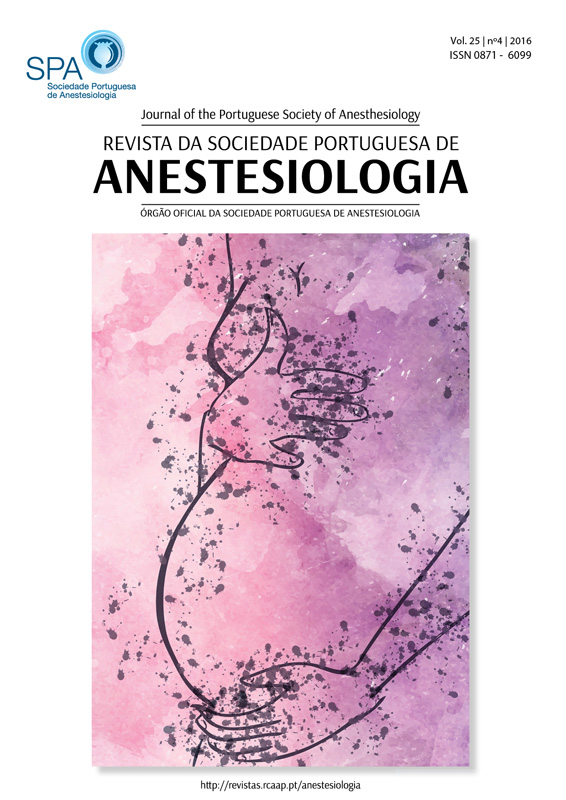Remote spinal epidural hematoma after spinal anesthesia for caesarean section
DOI:
https://doi.org/10.25751/rspa.9342Keywords:
Anesthesia, Obstetrical, Cesarean Section, Hematoma, Epidural, SpinalAbstract
In the last few decades there has been a widespread of the use of central neuraxial blockages (CNB) in obstetric patients. The complications from the CNB range from the bothersome to the crippling and life-threatening. Spinal epidural hematoma (SEH) is one of such severe complications. A 29-year-old pregnant woman at term, ASA II, was proposed for a caesarean section after inadequate progression of labour. Spinal anesthesia was administered and surgery was uneventful. The patient recovered from the motor and sensitive blockage but, twelve hours after the procedure, she started complaining of paresthesia over the lower limbs that progressed to paraplegia. An urgent magnetic resonance revealed a dorsally located SEH extending from D7 to D9, remote from the site of needle puncture. The patient was transferred and an emergency laminectomy and evacuation of the hematoma was conducted. One year after the event she remained with neurological deficits.
Downloads
Downloads
Published
How to Cite
Issue
Section
License
Articles are freely available to be read, downloaded and shared from the time of publication.
The RSPA reserves the right to commercialize the article as an integral part of the journal (in the preparation of reprints, for example). The author should accompany the submission letter with a declaration of copyright transfer for commercial purposes.
Articles are published under the terms of the Creative Commons Attribution Non-Commercial License (CC BY-NC).
After publication in RSPA, authors are allowed to make their articles available in repositories of their home institutions, as long as they always mention where they were published.


